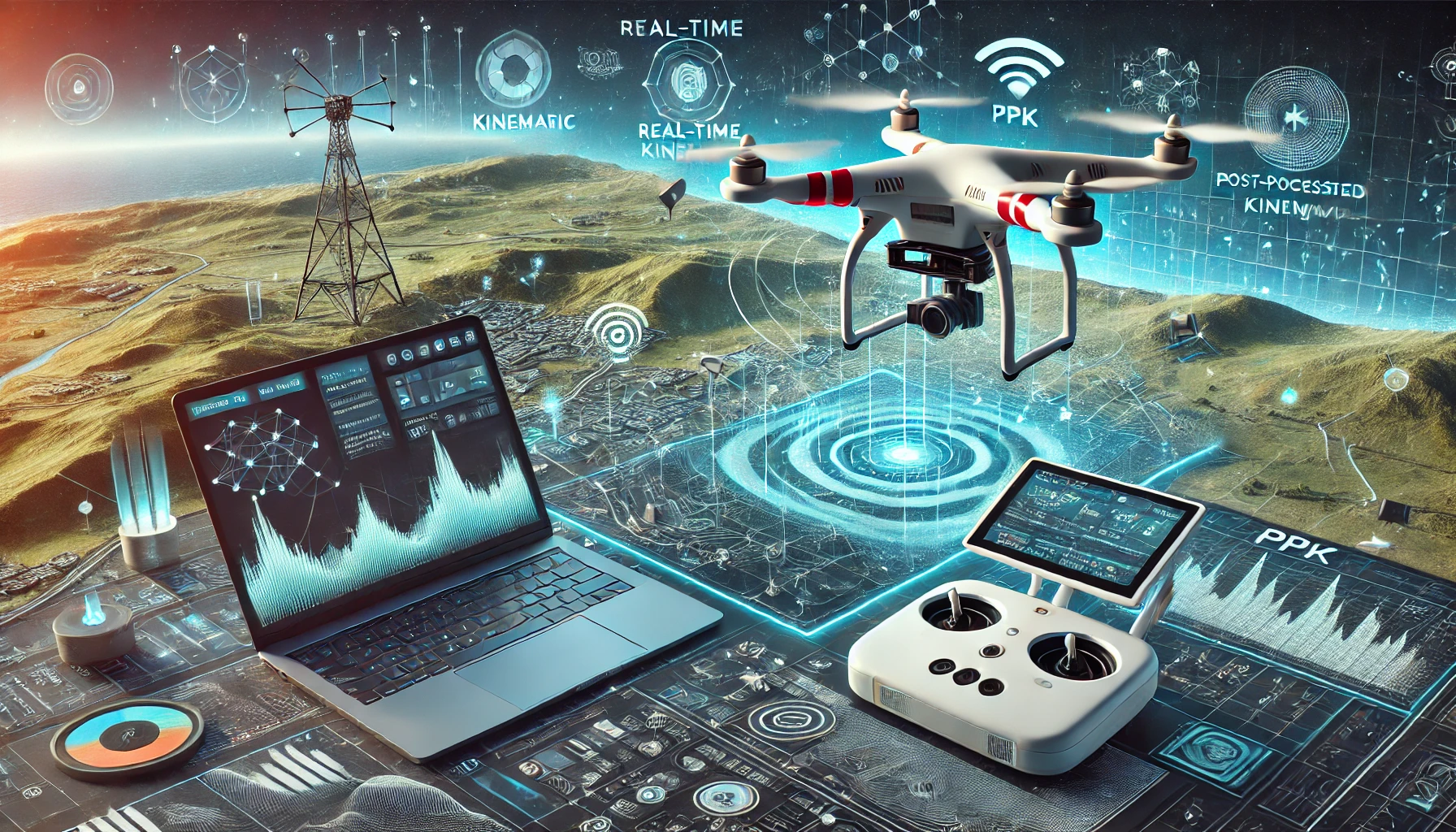Drone surveying has revolutionised industries by enhancing data collection precision and efficiency. Central to this advancement are two pivotal methodologies: Real-Time Kinematic (RTK) and Post-Processed Kinematic (PPK) workflows. Understanding the distinctions between RTK and PPK is essential for professionals aiming to optimise their surveying operations.
Understanding RTK and PPK Workflows
Real-Time Kinematic (RTK) Workflow
RTK is a GPS correction technology that provides real-time positional accuracy during drone flights. It employs a base station at a known location, which communicates with the drone to deliver immediate corrections to the GPS data. This real-time communication facilitates centimetre-level accuracy, crucial for applications requiring high precision, such as construction site mapping, agricultural planning, and infrastructure monitoring.
Post-Processed Kinematic (PPK) Workflow
In contrast, PPK involves collecting raw GPS data during the flight, which is then corrected after the flight using data from a base station or virtual reference station. This post-processing method allows for flexibility in data collection, as it does not require a constant connection between the drone and the base station. PPK can achieve centimetre-level accuracy by accounting for time-delayed corrections applied during post-processing.
Key Differences Between RTK and PPK
- Real-Time vs Post-Processing: RTK provides real-time GPS correction during the flight, enabling immediate data utilisation. PPK applies corrections after the flight, requiring additional time for data processing.
- Signal Dependency: RTK requires a stable connection between the drone and the base station during the flight, which can be challenging in areas with poor connectivity. PPK does not require real-time communication, making it more versatile in challenging environments.
- Accuracy: Both RTK and PPK deliver high accuracy; however, PPK can offer even higher accuracy as it is not subject to potential communication delays or disruptions during data collection.
- Workflow Complexity: RTK workflows are typically more straightforward, providing immediate corrections and faster data processing. PPK workflows involve additional steps, including post-processing, which can add complexity and time to the overall process.
Advantages and Disadvantages
RTK Advantages:
- Immediate Accuracy: Provides real-time corrections, allowing for immediate data utilisation.
- Efficiency: Reduces the need for extensive post-processing, speeding up project timelines.
- User-Friendly: Typically easier to use with less skill required to set up and operate.
RTK Disadvantages:
- Signal Reliability: Requires a stable connection between the drone and the base station; signal loss can affect data accuracy.
- Limited Range: The drone must stay within a certain range of the base station, limiting its use over large areas.
- Higher Costs: Can be more expensive due to the need for additional RTK modules or NTRIP service subscription fees.
PPK Advantages:
- Flexibility: Does not require real-time communication, allowing for data collection in areas with poor connectivity.
- Higher Accuracy: Not subject to communication delays, potentially offering higher accuracy.
- Larger Coverage Areas: Allows the drone to fly over larger areas without the range limitations that affect RTK.
PPK Disadvantages:
- Post-Processing Time: Requires additional time for data processing after the flight, which can slow down project timelines.
- Workflow Complexity: Involves extra steps, including post-processing, adding complexity to the workflow.
Applications of RTK and PPK in Drone Surveying
RTK Applications:
- Construction Site Mapping: Ideal for projects requiring immediate data for rapid decision-making.
- Agricultural Planning: Suitable for precision agriculture where real-time data is beneficial.
- Infrastructure Monitoring: Useful in monitoring infrastructure projects needing real-time data accuracy.
PPK Applications:
- Large Area Surveys: Suitable for surveying large areas where maintaining a real-time connection is challenging.
- Remote Locations: Ideal for areas with poor connectivity, as it does not require real-time communication.
- Complex Terrain Analysis: Beneficial in areas with complex terrain where post-processing can enhance data accuracy.
Choosing Between RTK and PPK
The choice between RTK and PPK depends on various factors, including project requirements, environmental conditions, and resource availability. Consider the following when making a decision:
- Project Urgency: If immediate data is required, RTK may be more suitable.
- Survey Area Size: For larger areas, PPK offers greater flexibility without range limitations.
- Connectivity: In areas with poor signal reception, PPK is advantageous due to its independence from real-time communication.
- Budget Constraints: RTK may involve higher costs due to additional equipment or subscription fees.
Conclusion
Both RTK and PPK workflows offer significant advantages in drone surveying, enhancing data accuracy and operational efficiency. Understanding their differences and applications enables professionals to select the most appropriate method for their specific needs, ensuring optimal outcomes in their surveying projects.
